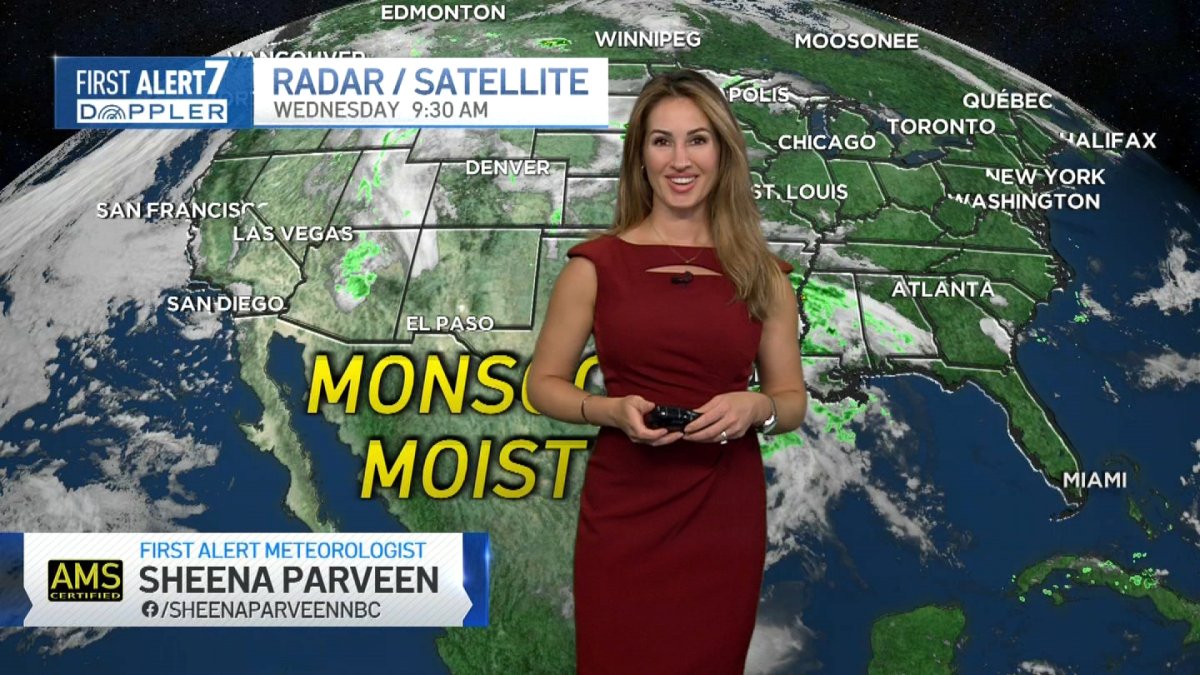
NBC 7 Meteorologist Sheena Parveen breaks down monsoon season in San Diego, which could be arriving early this year.
Oh, those summer months. When heat and humidity make you want to stay as close to the beach as possible and your air conditioning bill is blazing. But why does it get so hot and humid in San Diego? And what's with those occasional summer storms?
NBC 7's meteorologists break down monsoon season -- which could be arriving early this year -- and what it means for San Diego.
What is monsoon season like in San Diego?
During monsoon season, San Diego's weather pattern shifts to more of a southeast flow and conditions get hot and humid. Storms, thunderstorms and potential flash flooding are part of the weather shift as well and typically develop over San Diego's mountains and deserts, occasionally reaching the inland valleys and the coast.
Get San Diego local news, weather forecasts, sports and lifestyle stories to your inbox. Sign up for NBC San Diego newsletters.
When is monsoon season?
Monsoon season in the southwestern United States is from July to mid-September but forecasters are tracking some monsoonal weather as early as May this year.
"There is an above-average chance of precipitation in the southwest of the monsoon variety, which is very unusual to get a monsoon surge in May moving into the southwestern part of the U.S. but some of the long-range models are predicting just that," National Weather Service Meteorologist Mark Moede said.
Local
Parveen said NBC 7's weather models are also picking up some monsoonal moisture and if the flow is strong enough, we could see some storms next week.
Why do we have monsoonal moisture?
A monsoon is actually not referring to the hot and humid characteristics people experience but is actually referring to a wind shift that, in our case, causes moisture from the Gulf of Mexico to be pushed into the U.S. Southwest. In some parts of the world, monsoons are actually defined by dry conditions.
As Meteorologist Sheena Parveen explains, for our part of the country, monsoonal moisture starts in the Gulf of Mexico. In the summer, water temperatures in the gulf can reach up to 90 degrees, which causes moisture to rise and be pushed by those shifting winds into the U.S. southwest.
When that humid airflow reaches San Diego County, it rises over East San Diego County mountains and begins to cool and condense, forming large cumulonimbus clouds. When the clouds are full of water vapor it starts to rain, Meteorologist Ana Cristina Sanchez explains.
As the clouds continue to push westward, they sink back toward sea level and the air compresses and becomes warmer. The phenomenon is called orographic lift and is actually the reason behind those warm, humid summer months.